On this page you will find information on the:
Baccharis Coffee Weed Palmetto Privet vs Yaupon Wax Myrtle
Baccharis
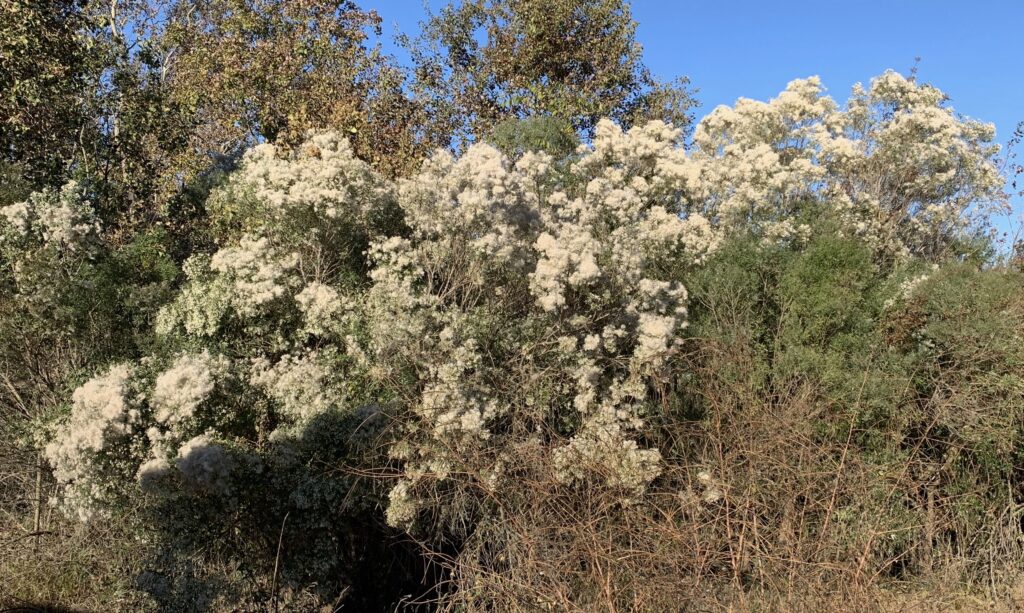
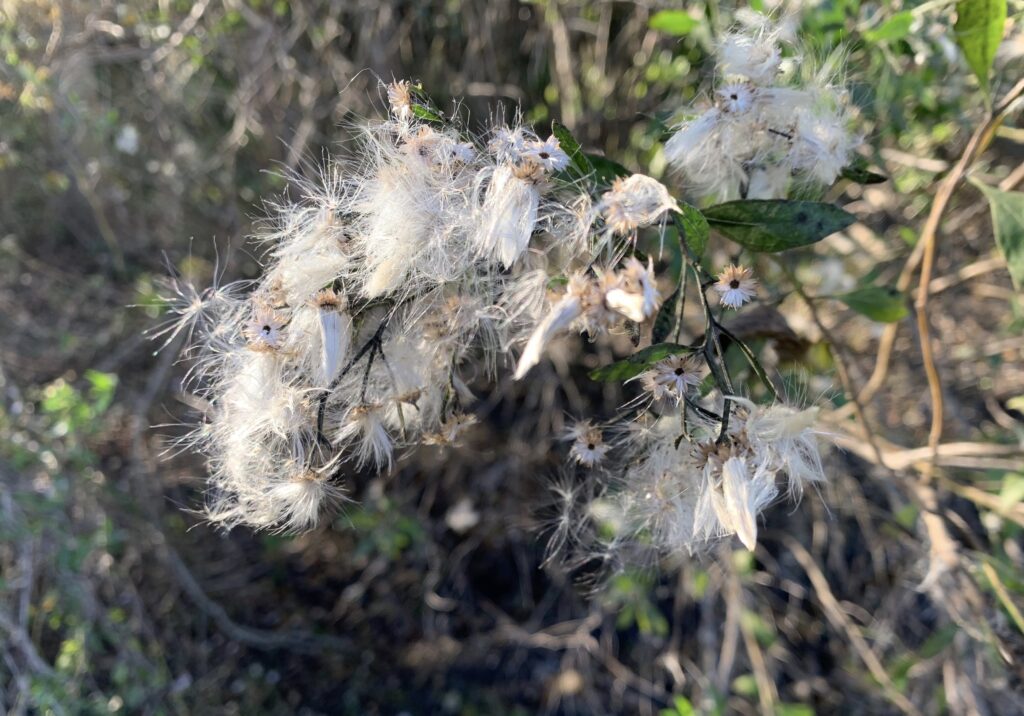
Common Name(s): Baccharis, cotton bush, groundsel bush, sea myrtle, saltbush, consumption weed, marsh elder and cotton-seed tree.
Scientific name: Baccharis halimifolia
Type: Shrub
Habitat: drained areas
Predominantly on both sides of the Greenway
Native
Perennial
During the growing season, this good-sized shrub (up to 12 ft. in height) dominates the roadside on the Greenway whilst being somewhat nondescript in appearance at the same time. They certainly don’t conform to any “ideal” shape, being rangy and sparse with patches of wiry branches and twigs distributed somewhat randomly about the bush, either sprouting small ragged leaves, particularly from the upper branches, or altogether barren. It’s like there’s not much “there” there.
Oddly enough, the plant is somehow related to the daisy. There’s also a similar bush lurking about called Iva frutescens, but Baccharis halimifolia leaves are alternate to each other and the leaves of Iva are opposite of each other.
It the late fall, after displaying a brief halo of small flowers, the shrub develops puffs of white down that carry small seeds. This earns the plant’s common name “cotton bush.” If one is lucky enough to walk through a small forest of these bushes during this time you’ll get a good dose of this fuzz on your clothes and up your nose.
Coffee Weed
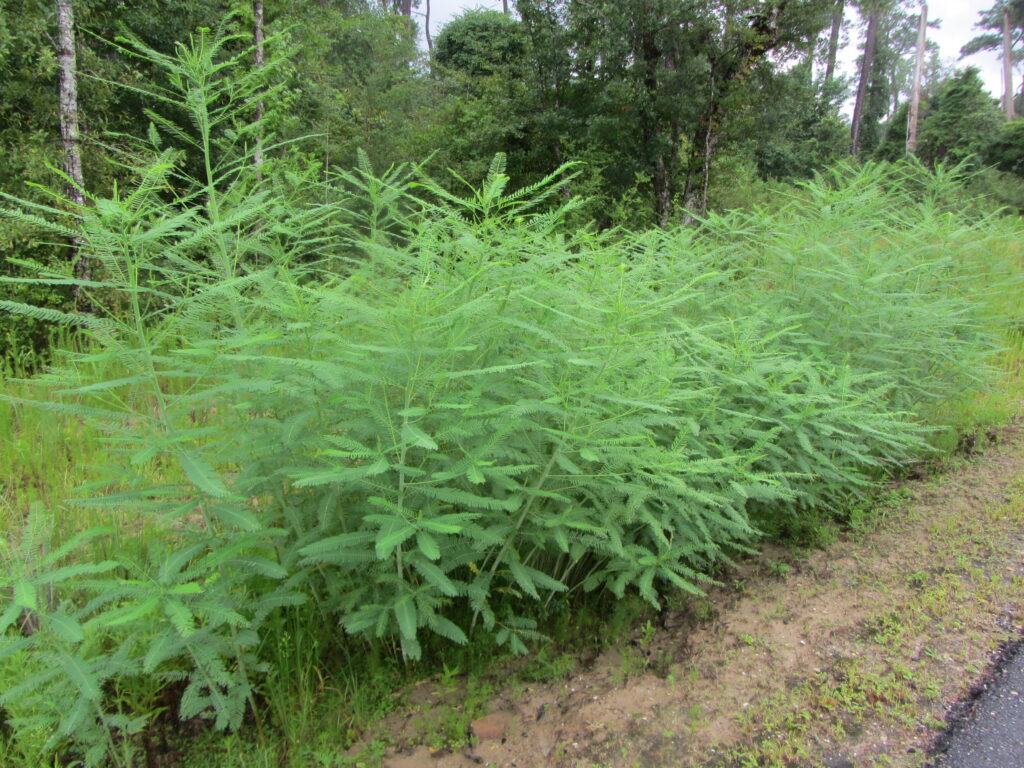
Common Name: Coffee weed
Scientific name: Sesbania herbacea
Type: Shrub
Habitat: ditch/drained area
Predominantly on the East side of Greenway
Native
Annual
The tall, rangy Coffee Weed pops up toward the end of the growing season and can quickly grow into huge four and five foot-high banks of emerald green along roadways.
The plant’s fern-like leaves and stems have a vague resemblance to mimosa and some confuse it with Rattlebox (Sesbania punicea). It eventually sprouts pretty little orange-yellow flowers that beget long, skinny seedpods containing the namesake bean. Unfortunately, these beans won’t make a good pot of coffee because, in spite of the name, they’re considered toxic.
The plant grows so fast you can almost hear them crackling at night. Being heliotropic, their leaves and stems face east toward the morning sun and slowly twist to follow the sun to face west at sunset and then the leaves fold up for the night. They sure move around a lot for a plant.
Palmetto

Common Name(s): Dwarf Palmetto Palm
Scientific name: Sabal minor
Type: Shrub
Habitat: slightly drained areas in swamp
On both sides of the Greenway
Native
Perennial
The giant, green, starburst-shaped leaves of Dwarf Palmetto Palms grow on slightly elevated ground in the swamp – low ridges deposited by flowing water, hummocks around trees and on old Indian campsites. Native American and European travelers used the evergreen as a guide to follow higher, drier ground through the swamp.
Native Americans used the plant’s tough, fibrous leaves in their everyday lives. They wove them around a bit of cane as a stiffener in baskets, trays and backpacks and layered them on top of their huts and cabins to make a durable, weatherproof roof that was easily repaired or replaced. Hunters continue to use them today to conceal their blinds in marsh and woods.
In the spring, the plant sends up tall stalks topped with tiny white flowers that turn into clusters of black berries by the end of summer that are food for birds and mammals. Parts of the plant are known to have medicinal qualities for humans.
Most Palmettos on the Greenway have standard 1-3 ft. stems but nearby is a small colony of a rare sub-variety growing with eight-foot trunks at Wetland Watchers Park in the LaBranche wetlands by the Bonnet Carre Spillway.
Privet vs. Yaupon
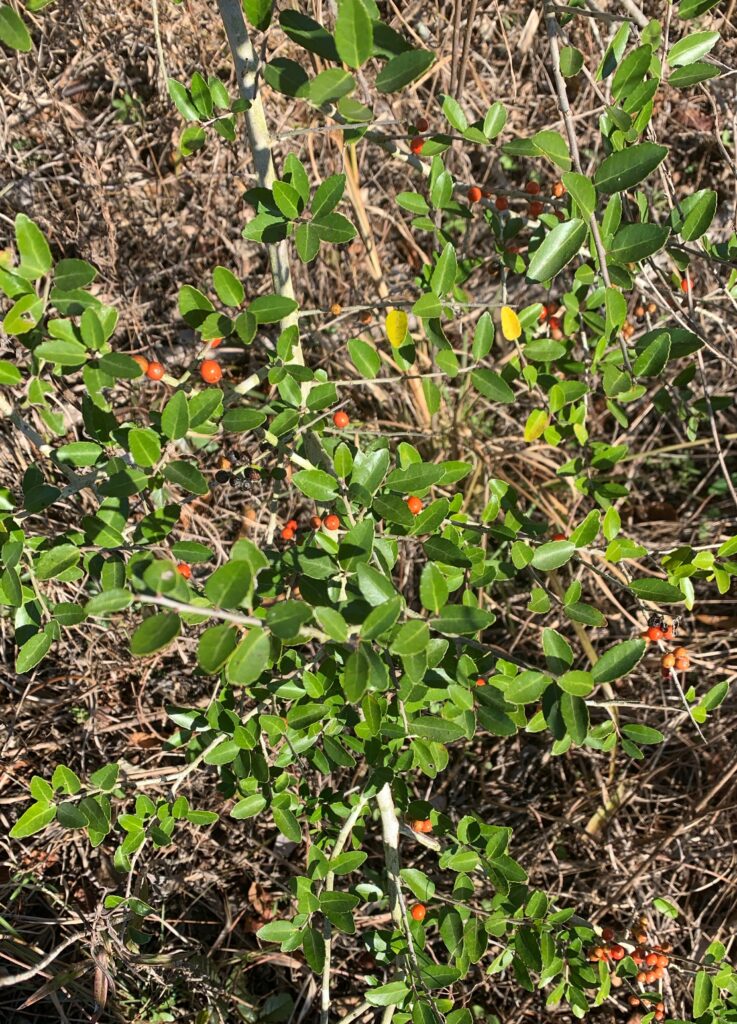
Common Name: Chinese Privet, Common Privet
Scientific name: Ligustrum sinense
Type: Shrub
Habitat: drained soils
On both sides of the Greenway
Non-native
Perennial
vs.
Common Names: Yaupon, Yaupon Holly, Cassina
Scientific name: Ilex vomitoria
Type: Herb
Habitat: drained soils
On both sides of the Greenway
Native
Perennial
Two shrubs on the Greenway with similar appearance and modus operandi have considerably different back-stories. They’re both “edge plants,” that is, under-story plants that favor the sunlit edges of the woods. Both are rangy in appearance, can grow to over 20 ft. tall and have small oval leaves on whip-like branches.
The legend of the invasive Chinese Privet is that it was imported and promoted as a poor-man’s fencing in the South during the Depression. Grown close enough together on the edge of a pasture it, can hold-in livestock. As a foreign invader, it has since attempted to take over the South.
The native Yaupon Holly grows in a similar way as Privet. To tell them apart: Privet leaves are “twinned,” sprouting two at a time, opposite each other on the branch and have small, round black berries. Their leaf-size depends on the amount of sunlight they’re in, being somewhat larger in shadier areas. Yaupon leaves alternate from the branch, are consistently a bit smaller, have a small, yellowish stripe in their middle and the plant has red berries.
British colonists used dried and crushed leaves from the Yaupon as a flavorful and perfectly acceptable substitute for their afternoon tea. Native Americans boiled the dried leaves down to a black concentrate used for medicine, and if drunk in excess it earned its scientific name: Ilex vomitoria.
Wax Myrtle
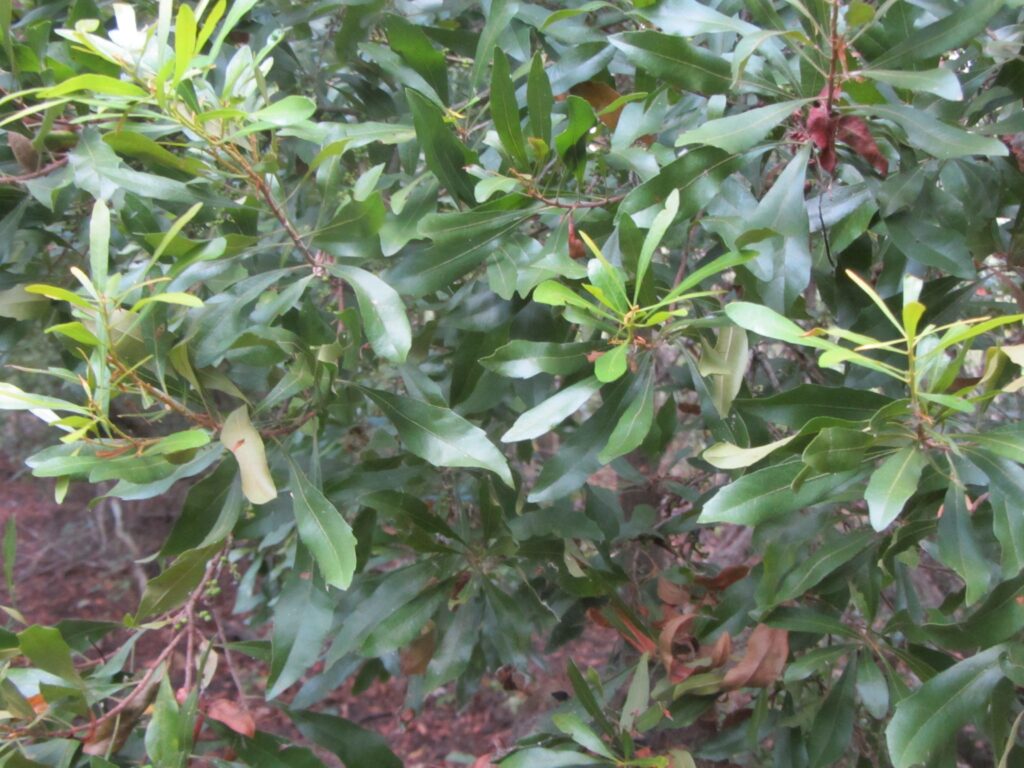
Common Name: Wax Myrtle
Scientific name: Myrica cerifera
Type: Shrub
Habitat: drained and partially drained soils
On both sides of the Greenway
Native
Perennial
The utility plant of south Louisiana’s wetlands is the Southern Wax Myrtle or Bayberry. It’s an evergreen that ranges in size from a large shrub to a small tree and is found in both salt marshes and Cypress swamps.
Another undiscriminating trait is how it grows — any old way it can. They will do whatever it takes to reach the sunlight, attaining grotesque, elongated, bizarre, Dr. Seuss-like shapes to work around the other plants in the forest. They can be found leaning way over toward an opening, or branching off in several directions to catch the sun here and there, with clusters of leaves bushing from the ends of their branches.
Another specialty of the plant is its wax, an aromatic coating on its berries that was once harvested for use in candle making. This also makes the plant exceptionably flammable and they’ll go up like the Hindenburg if they catch fire.
